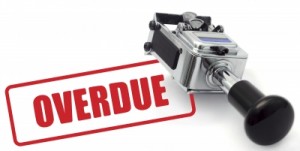Cash Flow Projections: Important in Business?
The term ‘cash flow projections’ is used interchangeably with the words ‘cash flow forecast’, ‘cash flow management’, ‘cash flow planning’ to name a few. Essentially they all mean the same thing; planning, forecasting or projecting the cash that is going in and out of the small business during a period. That period could be annually, monthly, weekly, or daily. It depends on the business.
Importantly, cash flow forecasting /cash flow projections are critical to success in any business. Cash flow forecasting is a business tool that all small business owners/entrepreneurs must engage with to effectively manage the success of their business. Failure to understand cash flow within a business, and the business becomes vulnerable and out of control. Cash is King (or Queen) in business. Profit is important, but it doesn’t pay the wages and the bills. It is cash that does that!
Many entrepreneurs manage their business from one cash flow crisis to another, simply due to poor or no cash flow projections (or cash flow forecasting) having been done in the business. I think many small business owners are frightened of ‘the numbers’ in business, or don’t want to spend the money asking their accountant or book keeper to do the work for them, or they don’t spend time working ‘on’ their business, preferring to work ‘in’ the business, working within their comfort zone.
Cash flow forecasting is done in all large businesses around the world with incredible accuracy. In fact it is so important to large businesses, that they have large teams of finance and treasury staff managing the cash flow on a daily basis. For example, a very dear friend of mine is a senior finance executive in a multinational business. She knows the daily cash balance and the net in and out flows to the business down to the last dollar, as they manage cash flows that carefully in the business, given its importance to the business.
While small business is not of that scale, it is similarly important as small business owners are responsible for paying staff (often) and they have monthly business expenses to pay. Consistently not being able to meet its financial obligations could well result in the business failing, and staff, who depend on the business for their income, being made redundant.
For many small businesses, cash flow forecasting is not difficult to do, by virtue of the fact they are small businesses. Cash flow projections templates can be freely downloaded from the internet and used to accurately plan for cash flow within the business. As well, many accounting systems can ‘spit out’ cash flow forecasts as a report, so long as the correct information has been put into the system when the accounts receivable or payable was entered into the accounting system in the first place, and so long as the book keeper or accountant includes all other accounting transactions that have a cash flow impact.
There are two steps to cash flow forecasting or cash flow projections. The first is to forecast/project the money the small business expects to receive in cash and pay out on any given day/week/month (if managing daily/weekly/monthly), starting with an opening balance of cash in the bank (or overdraft amount), on day one. Secondly, at the end of the period the business needs to re-forecast the cash flow based on what actually happened in the business, so that the small business owner has an accurate account of cash flow at all times.
For instance, let’s say an account of $10,000 is due to be paid by a customer on 20th of the month, and is put into the monthly forecast as such. If the customer doesn’t pay on that date, at the end of month the small business is going to have $10,000 less in the bank than it predicted, and that will potentially have an impact on what expenses can be paid at month end. Therefore, the cash flow needs to be re-forecast at the end of the month to allow for the late arrival of the $10,000 into the account and late payment of business expenses. This exercise happens on a monthly cycle, as cash flow projections or forecasts are just that, projections or forecasts. They are not accurate day to day unless they are updated daily.
It might seem like a lot of work, but it is necessary work for a small business. However, it should be delegated within the business, so the small business owner can continue working in the business, and simply reviewing the cash flow information that is provided to them. With that information, it is likely that customers will need to be chased up for payment of their accounts if they are late in paying, or creditors may need to be spoken to about delaying their payments if there is not enough cash in the bank.
Information is power. Cash flow projections/cash flow forecasting provides information on which to act. So, how about it? How about arranging a meeting with your accountant or book keeper to seek their help in preparing cash flow projections for your business, so you maintain control of it!
If you would like to learn more on how to address the cash flow issues in your business, then please go to www.adelemclay.com/free-resources and download my SPEARHead System™ – 50 Strategies For Supercharged Small Business Cash Flow.
Could some guidance from me be helpful to you? If so, please arrange a free 30 mins Skype strategy meeting with me. Here’s my calendar to book a meeting. I’d love to support you in some way to gain ‘seductive clarity’ in any aspect of your business or life.
Other articles on Small Business Cash Flow:
Small Business Cash Flow – The Ultimate Guide
Cash Flow Problems in YOUR Small Business
Small Business Problems – Why are YOU in Business?
Small Business Cash Flow Problems
Cash Flow in Business
Projected Cash Flow – Relevant to Business? How to Solve Cash Flow Problems: Inventory Turn









